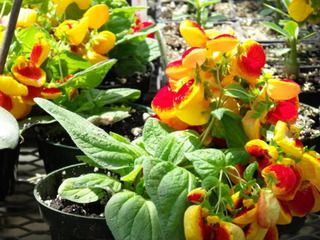
Pocketbook Plants are particular about their moisture; they need consistently moist potting mix. Do not confuse this with keeping the potting mix wet all the time. If the mix stays wet, the roots will rot away just like with any other plant. What you want to do is keep the potting mix from ever drying out all the way. Water the pot from the bottom when the surface of the potting mix has dried out. Pour off any remaining water after a half hour or so. It is helpful to grow this plant in a clay pot to help the potting mix aerate and to keep it in a sunny spot where the warmth can help the moisture evaporate more quickly. This way you can water thoroughly more frequently.
Propagation of Pocketbook Plants is simple. Typically, propagation from seed or cuttings is done. If you plan to collect seeds from the plant, allow the seed capsule to dry on the plant. When dry, seeds can be removed from inside the capsule. If you take cuttings, do not use any portion of the plant that is flowering. If you canít avoid it, remove flowers from the cutting.
Aphids and whitefly are the two main pests that you will find on this plant, though occasionally mealy bugs and spider mites can hitch a ride. It is very difficult to remove insects from these plants because they hide inside the flowers and are hard to remove. If an infestation occurs you will likely have to cut off many of the flowers so try to use a preventative action such as a systemic insecticide.
Pocketbook Plants are considered toxic and no part of them should be eaten. Take care when handling the plant as there are hairs on the stems that will irritate the skin.


